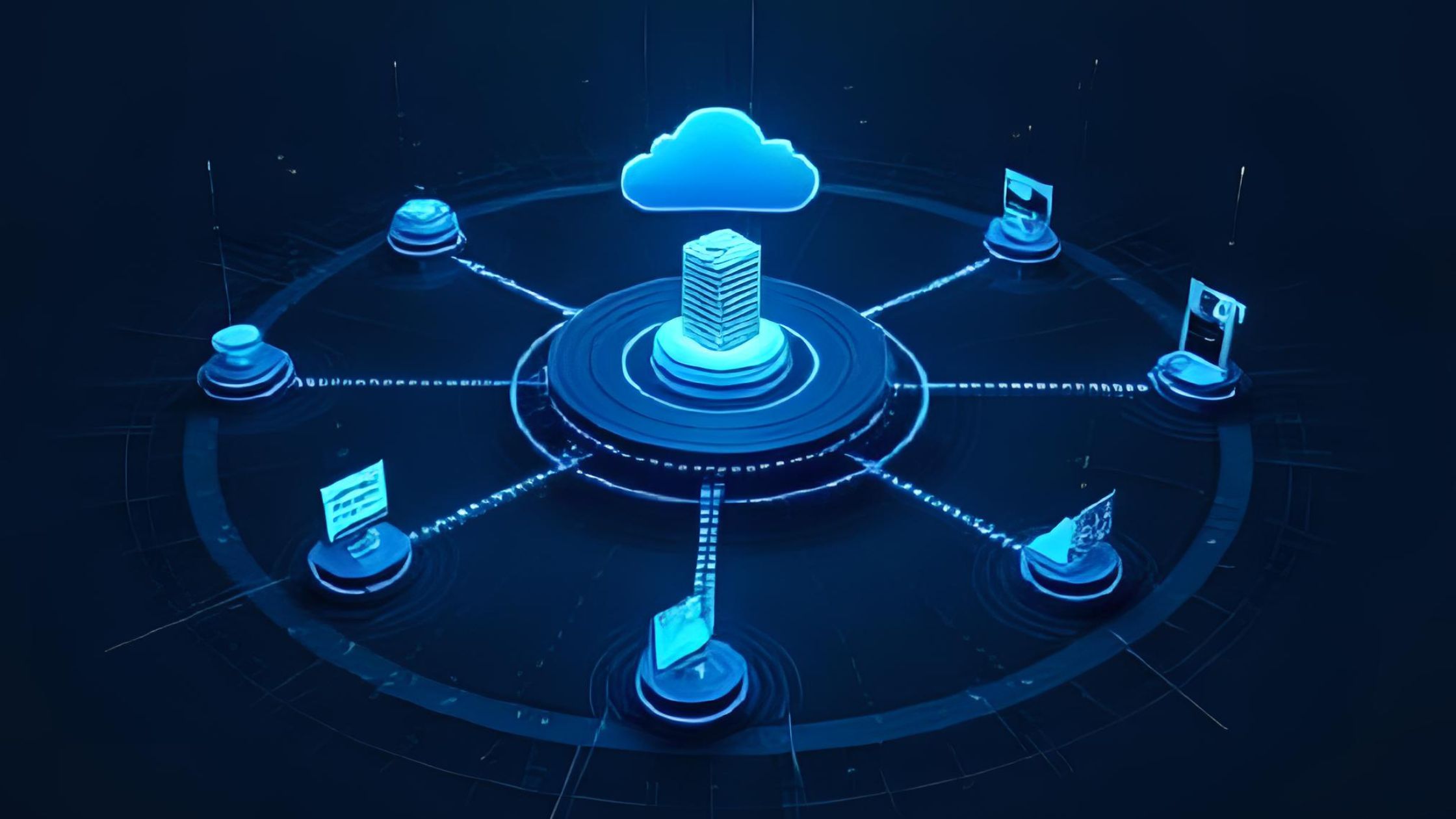At the 2025 Data + AI Summit, Databricks CEO Ali Ghodsi introduced Agent Bricks—a revolutionary development that allows companies to create and implement AI agents utilizing their own data, “without manual tuning or complex tooling.” Ghodsi called it “a whole new way of building AI agents that can reason on your data,” adding: “For the first time, businesses can go from idea to production-grade AI with speed and confidence, controlling quality and cost tradeoffs.”
This launch couldn’t be timelier. The Enterprise AI market is exploding—projected to grow from $58.11 billion in 2025 to $474.16 billion by 2030 (CAGR 52.17%). Drivers include industrial robotics, autonomous vehicles, cloud solutions, and IoT adoption across healthcare, manufacturing, and automotive. Yet, despite over 70% of large enterprises deploying GenAI in production by 2024, as reported by McKinsey, most initiatives remained siloed in disconnected pilots with murky ROI.
The divide is stark:
- 74% of mature AI adopters report strong returns, but 60% see under 50% ROI on average (Deloitte).
- AI budgets are rising 5.7% this year, with GenAI spend alone hitting $644 billion (ISG, Gartner).
- Leadership urgency is palpable: 75% of C-suite execs rank AI a top-3 priority for 2025 (BCG).
Databricks Data + AI Summit 2025 addressed these gaps head-on. Here’s how five innovations are shifting AI from experimental hype to tangible ROI.
Agent Bricks – No-Code AI Agents That Deliver Real-World Results
Build Production-Grade Agents in Minutes, Not Months
Agent Bricks eliminates the need for AI PhDs. Teams define an agent’s purpose via natural language, provide feedback, and let the platform auto-generate evaluations and optimize quality. As a Databricks Designated Service, Agent Bricks uses Databricks Geos to manage data residency for customer content. No code. No manual tuning.
The Key Implications
- Cost reduction: Slash development cycles and trial-and-error waste.
- Speed: Deploy agents in hours, not weeks.
- Control: Govern quality/cost tradeoffs strategically.
Real-World Impact
- Hawaiian Electric employed Agent Bricks to surpass open-source alternatives in terms of accuracy: “Agent Bricks significantly outperformed our original implementation in LLM-as-judge and human evaluation metrics.”
- AstraZeneca reviewed over 400,000 clinical trial documents without the need for coding: “In under 60 minutes, we had an agent transforming unstructured data for analytics.”
- The North Dakota University System managed to save around 30 days of manual labor by streamlining the process of extracting legislative data.
Lakebase – The AI Agent’s Real-Time Context Engine
Overcoming Disjointed Data for Instant Agent-Driven Decisions
Legacy architectures force painful transitions between transactional (OLTP) and analytical (OLAP) systems – a critical bottleneck when AI agents require instant context. Lakebase unifies both workloads on a single platform, enabling sub-second data access with built-in residency controls. Crucially, 80% of Lakebase databases now serve as context stores for AI agents, with the majority created autonomously by those agents to support reasoning and action.
Industries Winning Now
- Manufacturing: Agents ingest live sensor data to auto-adjust production lines during supply chain disruptions.
- Insurance: Claims processed with instant policy context + fraud analytics in unified queries.
- Logistics: Agents self-create route databases using live IoT feeds and dynamically optimize fleets.
ROI Driver
Near-instantaneous data unification allows AI agents to:
- Self-provision critical databases (80% of Lakebase instances).
- React to live operational data without pipeline handoffs.
- Maintain compliance via built-in residency controls.
Governance Intelligence – Where Compliance Meets Strategy
SHIFT-LEFT SECURITY: Governance Embedded in the Data Lake, Not Layered On Top
As GenAI budgets balloon (KPMG: 68% of firms plan $50–250M spends, up from 45% in Q1 of 2024) – governance must be foundational, not retrofitted. Databricks answers this through enhanced Unity Catalog, implementing critical upgrades at the data layer where security belongs:
- Attribute-based access control (ABAC): Granular permissions tied to data sensitivity (e.g., “Only oncologists can access Stage-4 patient biomarkers”)
- Semantic domains: Business-friendly data classifications (e.g., “assembly line IoT feeds”).
- Automated certifications: Streamline compliance for HIPAA/PCI or generate one-click compliance proofs for IATF 16949 or ISO 27001, eliminating manual audit bottlenecks
Why Shift-Left Security Wins
By enforcing governance in the data lake rather than on downstream layers:
- Policies travel natively with IoT data streams – no security gaps during real-time processing.
- Industry-specific domains (e.g., “powertrain diagnostics”) auto-map regulations to operational reality.
- ABAC enables precision control over sensitive AI agent contexts like automated quality control.
Conversational AI – Democratizing Data for Every Team
Genie + Databricks One: Speak to Your Data, Not SQL
Despite 72% of companies using GenAI, half restrict it to technical teams. The potential of AI stays untapped if it’s accessible only to data scientists. This bottleneck crushes ROI: finance waits weeks for cash flow projections, sales can’t prioritize leads dynamically, and operations miss real-time efficiency gains. Databricks tackles this with AI/BI Genie and Databricks One, enabling plain-language data interaction for every business user
The Democratization Breakthrough
- AI/BI Genie, Conversational Analytics at Scale: Users ask questions like “Show late shipments impacting Q3 revenue” and receive answers via text summaries, visuals, and tables — no SQL or dashboard hunting required. Each response includes a transparency trail explaining how conclusions were derived, building trust.
- Databricks One, Business-Friendly Interface: A code-free environment for non-technical users to access AI/BI Genie, certified dashboards, and custom apps. Integrated identity management (e.g., Okta, Entra ID) ensures secure, license-free scaling across departments.
You can create tailored interfaces for specific industries (like a retail inventory assistant, a car warranty claims analyzer, or even a production line optimizer) that connect data with everyday tasks.
Enterprise-Grade AI – Security, Scale, and Production Pipelines Built-In
LakeFlow: The AI-Powered Engine for Production-Grade Data
While AI agents drive decisions, their success hinges on trustworthy data pipelines. Enter Databricks LakeFlow – the complete solution for building and operating production data pipelines with low-code efficiency and AI-driven optimization.
- Native Enterprise Connectors: Pre-built integrations for SQL Server, Salesforce, Workday, ServiceNow + 20+ sources
- Unified Batch/Stream Processing: Transform data in SQL/Python with Real-Time Spark (sub-second latency vs. traditional microbatch)
- CI/CD Deployment: Orchestrate, monitor, and deploy pipelines with GitOps workflows
- Governance by Design: Native Unity Catalog integration with auto-lineage and ABAC enforcement
The Impact
92% of AI projects deploy within a year, averaging $3.50 ROI per $1 spent. AI innovation no longer requires sacrificing security, compliance, or operational stability. Robust enterprise guardrails are now intrinsic to the platform. This removes a major adoption hurdle for risk-averse industries and large global enterprises.

What Forward-Looking Enterprises Must Do Now
- Identify high-impact agent use cases: Start with departments drowning in unstructured data (legal, procurement).
- Reinvent governance: Align Unity Catalog upgrades to business objectives.
- Shift from pilots to platforms: Prioritize integrations that connect AI to core systems.
- Partner strategically: Work with implementation experts to future-proof your stack.
Conclusion
The Databricks Summit 2025 signified a groundbreaking change: AI has moved beyond being just a lab experiment or a collection of point solutions. It’s becoming the intelligent infrastructure powering the enterprise.
- Agent Bricks serves as the key driver, facilitating the development of advanced, domain-aware digital workers.
- Lakebase provides the real-time data foundation they need to act.
- Governance intelligence ensures they operate safely and ethically
- Conversational interfaces let the entire workforce leverage their power.
- Enterprise-grade security makes it all viable at scale.
As Ghodsi hinted, the winners will treat AI as a core operational layer—not a buzzword or trend. For enterprises, this means moving faster, spending smarter, and finally converting hype into hard returns.
Ascentt is a last-mile Enterprise AI partner that delivers accountable, scalable solutions to Databricks. We implement with a security-first design—ensuring scale never outpaces safety.
Book a 30-minute Databricks co-lab session with Ascentt today. Let’s explore how Agent Bricks, Lakebase, and the full Data Intelligence Platform can accelerate your path from AI hype to hard, measurable business outcomes!
FAQs
How does Agent Bricks simplify building AI agents?
Test vehicles often capture sensitive personal data such as faces, license plates, or house numbers through onboard cameras. This data can pose significant compliance risks under regulations like GDPR and CCPA without real-time obfuscation.
What are the benefits of Ascentt’s real-time obfuscation solution?
Unlike traditional solutions, Ascentt’s obfuscation agent operates at the edge in real time. It uses Vertical AI and deep learning models trained on automotive-specific data to accurately detect and mask PII without disrupting video quality or engineering use cases.
Why are Vertical AI solutions better than Horizontal AI solutions?
Vertical AI solutions are purpose-built for the automotive domain. They understand the structure of vehicle data streams, camera layouts, and engineering workflows. This domain specificity enables accurate, scalable, and regulation-aware obfuscation that generic, horizontal AI models can’t match.
Enable Enterprise AI




